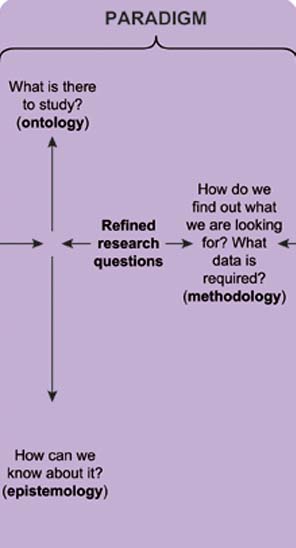2.4 Beginning the research process
Figure 3 shows the relationship between ontology, epistemology and methodology.
In reading Figure 3 and thinking about ‘doing’ research it is helpful to consider a paradigmatic position as something that evolves as a researcher makes explicit their ontological and epistemological positions. This can be achieved using the research literature as a tool. It is also the case that over time, as ontological and epistemological positions evolve and a researcher ‘learns’, then they may change their methodology or indeed their paradigmatic position completely.
Figure 3 highlights the important relationships and decision points you need to be aware of either in doing research or reading research. However, it is important to recognise that your overall approach carries a degree of flexibility. For example, deciding on research questions and the purpose of a study can precede the paradigm exploration, but will then be refined after that. That is why the research questions are located centrally in Figure 3.
Similarly, once the methodology is considered, research questions may be refined further in light of thinking about how to answer them. This reflects the iterative nature of the research process. In literature, the research process is typically represented more sequentially to show the logic underneath the process engaged in. It is worth remembering this distinction between the process engaged in and how it is then represented.

